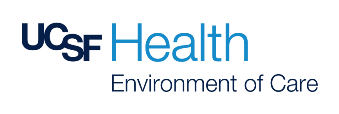During a major disaster, telephone networks may become severely congested or disrupted and may prevent you from making (and/or receiving) telephone calls. To remedy this issue, the Government Emergency Telecommunications Service (GETS) was created to provide services to:
- Every federal & state government organization (ex. Department of Homeland Security)
- Local Emergency Management departments
- Local Government Agencies
- Local First Responders
Frequently Asked Questions (FAQs):
Question: How do I access my GETS card?
Answer: You can access your GETS card information anytime by:
Step 1: Go to https://tiny.ucsf.edu/MyGETSCard
Step 2: Click on your name, the line will highlight in blue.
Step 3: Click the GETS Card.pdf attachment to download it.

Question: What is the purpose of GETS?
Answer: GETS provides priority treatment from any phone (ex. landline, cell, VOIP, etc). GETS works best with landlines.
Question: What if I lose my GETS card?
Answer: Send an email to Francine Sneddon ([email protected]) to request a new card.
Question: How much does it cost to make a GETS call?
Answer: GETS is a free service.
Question: What happens when I make a GETS call?
Answer: When a GETS call is initiated, the call is directed to the nearest substation and given priority status. GETS works best with landlines.
Quesiton: What types of phones does GETS work with?
Answer: GETS works with any type of phone (ex. Cell, Landline, VOIP). However, GETS works best with landlines, there may be delays with calls to and from cell phones.
Question: Is there Operator Support?
Answer: Yes, for Sprint and Verizon customers, just wait 6 to 8 seconds without entering your PIN. There is no GETS operator support for AT&T.
Question: Can I use GETS to call 911?
Answer: No, it does not support 911.
Queston: What if I hear silence after entering my destination phone number?
Answer: When the network is severely congested, GETS calls may be placed in a queue until a circuit becomes available. While waiting, you may also hear silence or intermittent tones. Stay on the line until your call completes. It may take up to 30 seconds or longer.
Question: What if I’m having a problem making a GETS call?
Answer: Many cellular carriers incorporate WiFI connectivity into mobile phones in order to increase coverage and capacity. As a result, you may need to disable WiFi to ensure your call is sent over the voice network instead of WiFi.
Call the 24 Hour User Assistance line at 1-800-818-4387 or 1-703-818-4387. These numbers are found on the back of your GETS card.
Question: How can I test my GETS access?
Answer:
- Dial 1-710-627-4387
- At the tone, enter your PIN (found on your GETS card)
- When prompted, enter any phone number (area code + number, do not enter 1 before destination area code)
- If you are able to make a phone call, you have successfully tested your GETS access
Question: Is there a way I can avoid having to carry the GETS card with me?
Answer: Yes! Here are a few ideas:
1. You can take a picture of the front and back of your GETS card and store it as a favorite in your phone photo album.
2. You can copy the GETS card information as a contact in your cell phonebook.
3. Download the GETS app and enter your GETS card info.
Question: Is there a GETS app I can download?
Answer: Yes, please visit this website to download the Android, iPhone or Blackberry app: https://gets-wps.csgov.com/apps/
Question: What if I’m unable to make a call using the 1-710-627-4387 number?
Answer: You can use these alternate phone numbers:
1-888-288-4387 (AT&T)
1-877-646-4387 (AT&T Internet Protocol (IP) Network)
1010 + 288 + 1-710-627-4387 (AT&T) (for use from landline phones only)
1-800-257-8373 (Sprint)
1-855-333-4387 (Sprint IP Network)
1010 + 333 + 1-710-627-4387 (Sprint) (for use from landlines only)
1-800-900-4387 (Verizon)
1-855-400-4387 (Verizon IP Network)
1010 + 222 + 1-710-627-4387 (Verizon) (for use from landline phones only)
Question: Can I view the training webinar?
Answer: Yes. Here are the links to the webinar and training deck, you will need to login with MyAccess:
